Secrets of growing kobei from seeds in Russian gardens
In order to grow any plant, you need to understand it. Moreover, such a complex and luxurious plant as kobeya. This article summarizes the experience and knowledge of many gardeners who have understood the needs of the climbing kobe and have been successfully using it for landscaping their plots for several years.
Beautiful tropicana "climbing kobeya"
Every passionate gardener dreams of having something special on his or her plot that makes a bright impression, is pleasing and memorable. Kobea is just such a plant, and growing kobea from seeds at home is a complex, fascinating process and gives the deepest satisfaction.
Like most vines known to us, kobeya comes from the tropics, namely, from the tropics of South America, where about 9 varieties of this plant are found. Under its usual conditions, kobeya is a perennial, grows in tropical forests and can rise to a height of 5-8 meters, clinging with its antennae to branches and tree bark, to all possible protrusions and roughness. Here, kobei propagation occurs naturally through self-germination of fallen seeds.
A completely different situation is observed when trying to grow kobeya in our country. Not all known species can tolerate the peculiarities of the Russian climate, so we have the opportunity to admire only one representative of this luxurious vine - the climbing kobei, but in its different varieties.
Anyone who has ever encountered kobeya in landscape design will certainly want to plant this plant in their garden.Kobeya grows very quickly, covers large areas with lush greenery, delights with the openwork emerald of its leaves and large bells of flowers. Having such a beauty in your garden is a very worthwhile endeavor.
A reliable way is to grow kobeya from seeds
As soon as they call kobeya for its disobedience: “capricious beauty”, and “problematic bindweed”, and “belated joy”... Many, many gardeners make attempts to grow this vine every year. It must be said that not everyone succeeds on the first try. But it is imperative to grow kobeya from seeds, and from the latest harvest, since germination directly depends on their age.
There is another argument in favor of grow seedlings independently: a fairly long period of plant development from germination to flowering. Kobeya, soon after germination, sharply increases in growth and until the time of planting in a permanent place it has a greater height and needs support. In addition, the tendrils that appear strive to catch on to everything possible, spin around the trunk, intertwine with each other, so each plant needs to be grown individually: sow in time, tie it up, pin it - only then it will delight you with early and abundant flowering.
When growing seedlings on a large scale, it is extremely difficult to provide the necessary conditions, if only because of the lack of space. Therefore, when purchasing a strong but small kobei bush at a green fair, you can hardly expect it to bloom, since in age it is about a month behind its counterparts grown from seeds at home.
Selecting the right soil for growing seedlings
The soil for growing seedlings should be similar to the natural soil of the tropics - light, loose, easily permeable to air and moisture. Many gardeners use universal soil for seedlings. You can prepare a mixture of equal parts of sand, humus, leaf and turf soil. You shouldn’t worry too much about nutritional value and fertilizing, so as not to cause a sharp growth of seedlings, because they have to wait two to three months for planting in the ground.
Kobe planting dates
The whole process of growing kobeya may seem too labor-intensive and complicated, however, those who show patience and sincere interest will receive a well-deserved reward and a long friendship with this amazing plant.
Important! Sowing of seeds must be done at the end of February, but better in early March (spring after all!) The planting schedule should include time for seed preparation - from 1 to 3 days and time for germination - up to 12 - 15 days.
The seed shell is very hard, so many gardeners prefer their preliminary preparation:
- Soak until the shell separates. Cover the container with a damp cloth, spread out the seeds, place everything in a plastic bag, and place in a warm, bright place. Change the napkin periodically, wash the seeds, and prevent mold from appearing. After swelling, the softened shell will detach and can be carefully separated.
- Soaking in Epin solution or aloe juice within a few days. This technique will give the seeds strength, increase immunity and soften the shell.
- Piercing. Soak the seeds until they swell and carefully pierce the shell with a needle. This will help the sprout to break through.
Methods and conditions for seed germination
Then the seeds need to be germinated. There are also several methods known here:
- Take a small container, cover with a damp cloth, spread out the seeds and add water, preventing them from drying out. The container should be in a warm place. The first roots appear after 12-15 days.
- Also spread the seeds on a damp cloth, cover with plastic wrap and place in a warm place. It is necessary to remove condensation from the film daily, ensure that mold does not form, and change the napkin. The waiting period for the first roots is 2 weeks.
- Place the seeds in peat tablets, do not over-moisten or over-dry. When a sprout appears, transfer it to a pot with soil.
- Sow dry kobe seeds in moist soil in a small container. Shoots will appear in 2-3 weeks. In the future, it will be transplanted into a larger container.
Proper care of kobe seedlings is half the success
You can sow and grow kobeya in peat and any other cups, but the most gentle way is in foil cups. They are easy to make yourself. To do this, you need to take a regular glass, wrap it in 2-3 layers of foil, without grabbing the bottom, and carefully remove the resulting cylinder from the glass. Place the required number of such cylinders tightly in a container with holes in the bottom and fill with soil. Then sow the seeds to a depth of 1.5-2 cm.
As we remember, kobei seeds have low germination, so such sleeves are temporary containers and are intended solely to avoid unnecessary consumption of soil and space. After the sprouts appear, the first true leaves unfold, the viability of the future vine becomes clear, the cylinders can be easily torn and, without damaging the root system of the seedling, transplant it into a larger container, in which it will safely wait until it is planted in open ground.The volume of three to four liter pots will be quite enough.
During this infant period, caring for the kobei consists of watering, feeding with humate, and providing support. The plant develops rapidly, shoots out a long powerful shoot, which is looking for something to gain a foothold on. Wooden sticks can be used as support, but most often their length is not enough. It is much more convenient for these purposes to take twine or hemp rope, secure one end of it at a height and wrap the other around the seedling. When the time comes to move, it will be convenient to untie the rope, roll it together with the plant into a ring and transport it for planting to the dacha or plot.
During this same period, you can pinch the vine for the first time to awaken the lateral buds. By the time it is transplanted to a permanent location, the kobeya reaches a height of up to two meters, and it is better if several shoots have already been formed.
The subtleties of planting kobe seedlings in open ground
For different regions of our country, the time for planting kobei in open ground can be different: from mid-May to mid-June. You need to wait for consistently warm weather, since a drop in temperature to +10 - +5ºС is difficult for young plants to tolerate.
To plant kobei, you should choose the sunniest, warmest, but not hot, places. In areas with scorching sun, it is better to use light partial shade. In addition, you should avoid drafts and strong winds, as the wind tears and breaks the shoots. In any case, the kobeya should be in plain sight, as its appearance provides aesthetic pleasure. But that’s exactly why we grow it!
This luxurious vine requires space, as it can cover quite large areas.If you plan to plant several bushes side by side, then the distance between them should be 70 - 90 cm. Some skilled gardeners practice rooting cuttings by dropping them, so with the help of one kobe bush you can turn an unsightly fence into a fragrant green hedge over the course of a season.
Before planting the kobei, a spacious planting hole is prepared and filled with fertile soil. The pot is well watered, after which the seedling is carefully removed, placed in a permanent place, watered abundantly and tied up.
Caring for kobeya in the garden
Kobeya will not let you relax even after landing in the ground. She really loves moisture, spraying, feeding. To achieve the greatest decorative effect, it must be watered regularly, the tree trunk circles must be mulched in hot climates or loosened in humid climates.
This tropical beauty doesn't like dry air. In the heat, dry spots may appear on the tips of the leaves, growth and flowering may stop. This phenomenon is temporary. Evening spraying will make life easier for the plant. With a drop in ambient temperature and the onset of cool evenings, the kobeya will again appear in all its splendor.
After transplanting into the ground and during the period of active growth, weekly fertilizing with organic and mineral fertilizers is necessary, which is best alternated. A good effect is achieved by using mullein infusion, nitrogen and complex fertilizers for flowering plants. With the appearance of the first buds, you need to add fertilizers containing potassium and phosphorus; nitrogenous ones, on the contrary, should be reduced, since we are more interested in flowers rather than leaves.
Regular pinching prevents the lashes from becoming too long and intertwined. The bush becomes more decorative and looks well-groomed.A garter is required only at first; later the kobeya will take care of it herself, the main thing is to provide her with strong support.
It must be taken into account that this vine is quite aggressive and is capable of using its closest neighbors as a support, so it is extremely important to maintain intervals between plants and remove overgrown shoots of kobei.
Options for using kobeya in garden design
Kobeya climbing is a source of inspiration for landscape designers and creative gardeners.
- It can be used for vertical gardening of pergolas, gazebos, and arches.
- Behind the lush greenery of this vine you can hide a variety of architectural flaws: dilapidated fences, ugly brickwork, a rough retaining wall.
- By arranging a dense curtain of kobeya, it is easy to divide the garden into recreation areas according to interests.
- After planting the bush in a container, you can place it on the top step of a stone staircase and let the shoots cascade down.
- A wire garden figure can be transformed into a living sculpture in one summer with just one plant.
- The balconies decorated with kobeya are magnificent. Although it is not easy to get it to bloom in such conditions, its powerful greenery is captivating, and flowers can be added by hanging varieties of other plants.
- The flower beds consisting of cobea and its partner plants are very beautiful. Some gardeners use for this purpose various varieties of petunia, which bloom profusely lobelia, short marigold, verbena.
Known methods of breeding kobei
In addition to propagation by seeds, our gardeners describe several more methods:
- Digging in shoots. From an adult plant, select a powerful shoot located close to the ground, prepare a long groove for it, place it there, secure with a wire pin and cover 2/3 with soil.Pin the top of the shoot. Make sure the soil is constantly moist. Soon young shoots will appear and the bush will spread not only in height, but also in width.
- Summer sowing. Sow kobeya seeds in peat pots in mid-July at home. After germination and the appearance of real leaves, plant it in a large pot and bury it in the garden. There the plant adapts to external conditions and prepares for wintering. With the onset of cool temperatures, the pot of kobeya is taken out, checked for pests, watered and put into the basement. If there is a cool and bright room, then you can leave it there too. In April, the vine is returned from wintering to a sunny windowsill and then the kobeya is cared for as described above.
- Cuttings from last year's bush. Place the bush that overwintered in the basement in a warm, bright place. After some time, it will throw out young shoots, which are carefully cut off and rooted in damp sand, just like any other cuttings.
Is it worth collecting kobe seeds?
In the southernmost regions, where early planting of kobeya in open ground is possible, its abundant flowering is observed, and some gardeners receive fruits. However, even there the seeds do not reach the required maturity and are unlikely to be able to produce offspring.
In more northern regions, kobeya does not have time to form seeds at all, so seed material must be purchased annually and, preferably, from different manufacturers.
From Tropican to Russian
Restless gardeners do not stop trying to transform the climbing kobe from an annual into a perennial. To do this, summer sowing is done (the method was described above), and adult bushes are also left for wintering.
In early - mid-October, the vine bush is pruned and inspected for the presence of pests and diseases. Healthy specimens are carefully dug up, placed in a large container and transferred to the basement, where they are stored at a temperature of +8-10ºС until spring, occasionally moistening. In April, the plant is pulled out into light and warmth and cared for before planting in open ground. Gardeners who have successfully used this method report earlier and more abundant flowering of kobei.
How to recognize diseases and protect against pests
The most dangerous disease for kobei is root rot. It is especially common in areas with a humid climate. Its signs are the appearance of dark spots on flowers and leaves, and in later stages – the wilting of the entire bush. The plant requires constant watering and, in order to avoid the development of root rot, the tree trunk circles must be loosened, providing oxygen access to the roots.
Another unpleasant phenomenon is drying out the tips of the leaves, slowing down the growth and formation of flowers. This cannot be called a disease, just a reaction of the plant to high temperatures that are observed in areas with hot climates. You can help the vine survive an unfavorable period by spraying the shoots in the evening. Later she will thank you for such care with lush greenery and abundant flowering.
The succulent leaves of the kobei tree are relished by two main pests: spider mites and aphids, and while aphids are easy to detect and destroy, the situation with spider mites is much more complicated. There are many known ways aphid control various folk remedies, but it is better not to waste time, but to immediately use modern chemicals in accordance with the instructions in order to have a healthy and beautiful bush on your site.
spider mite - a microscopic insect that many inexperienced gardeners discover too late, when the leaves begin to turn yellow and fall off, and in the advanced stage a thin cobweb is visible, entangling the leaves, shoots, and flowers. Such a plant will die on its own and become a breeding ground for spider mites, which quickly spread to many other plants.
One adult female, during her short life of 2-3 weeks, manages to produce several hundred eggs, which mature and produce new insects every 3 days. Once in the ground, the eggs remain viable for 5 years. A spider mite infestation is similar to an epidemic and requires quick and decisive action.
Approach your kobei often, inspect the leaves and as soon as you notice small yellow dots, turn the leaf over and examine its lower surface through a magnifying glass. Most likely you will find a light cobweb and a colony of small insects: adults, small ones and numerous eggs. It is urgent to remove and burn the affected leaves, treat with an appropriate preparation and repeat this procedure until the plant is completely healthy.
It makes no sense to list the names of drugs to combat aphids and spider mites, since these insects develop resistance and the means of control should be changed annually.
Suggested varieties of kobei
As mentioned above, only one species can grow in Russia - climbing kobeya. The most popular varieties are those with purple and white flowers. Moreover, purple varieties of kobei have larger flowers, up to 10 cm in diameter, and white varieties have beautiful greenery
To maintain its decorative quality at a high level, you need to remove dried flowers. And if seed pods also appear on your vine, then you can admire its beauty tirelessly. Mixed plantings of purple and white varieties look especially luxurious.
Planting material should be purchased every year and from different manufacturers. Firm Russian vegetable garden, for example, offers kobei seeds Lilac Ringing and Tsar Bell. The first variety has large purple flowers, the flowering period is from July to September. The second is later flowering, from July until frost, and slightly smaller delicate white flowers.
In the assortment of the online store Plasma Seeds white varieties are represented by Kobei Jingle Bells and White climbing, and 
Agrofirm Aelita, in addition to those listed, offers Lady Hamilton kobeya with dazzling white flowers and Violet, blooming with dark purple and pale purple large bells. So there are options to choose from.
No matter how troublesome the process of growing kobeya from seeds at home may seem, all the work will be rewarded by communication with a magnificent plant, aesthetic pleasure and a sense of pride in one’s own success.
Continuation of the topic:
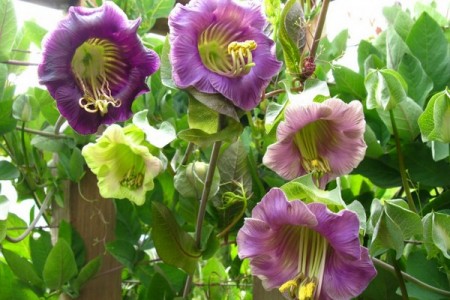
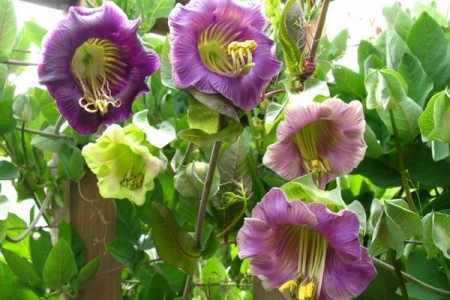
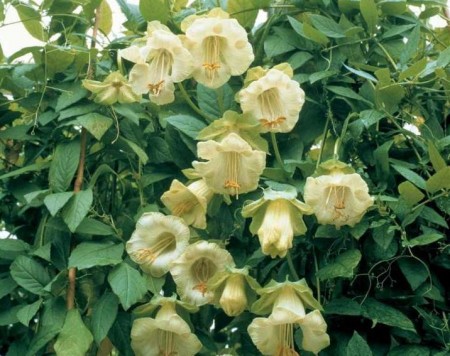

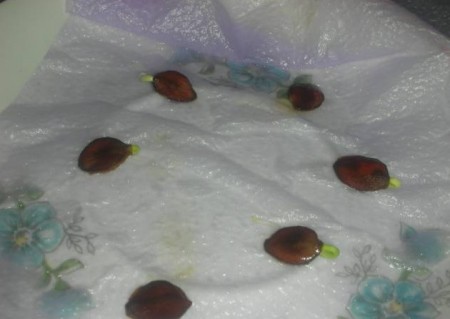
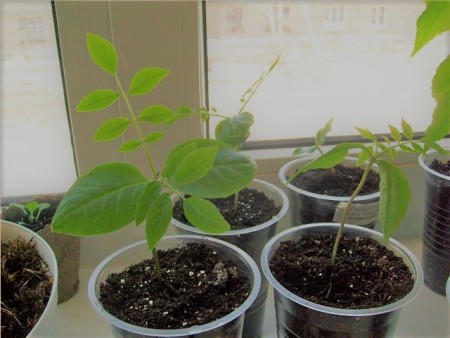
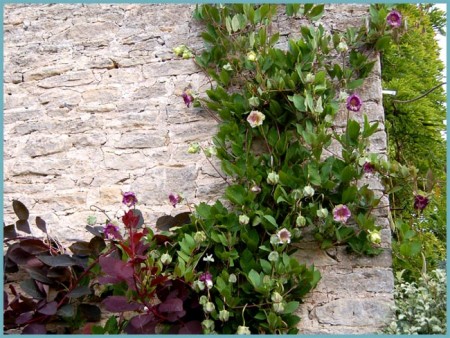
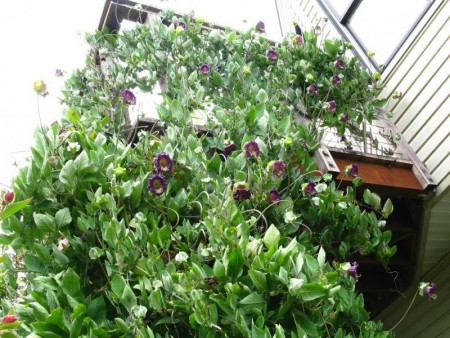
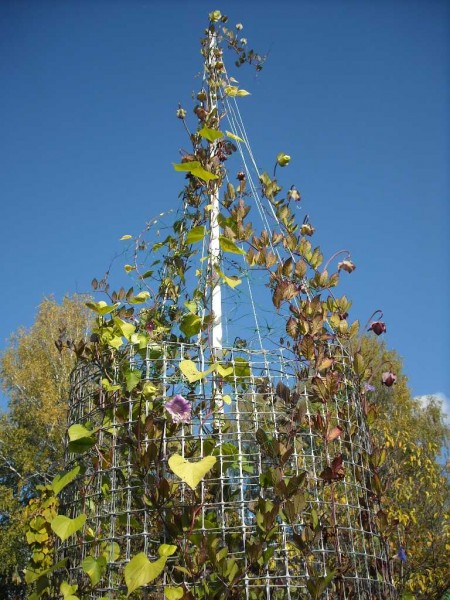
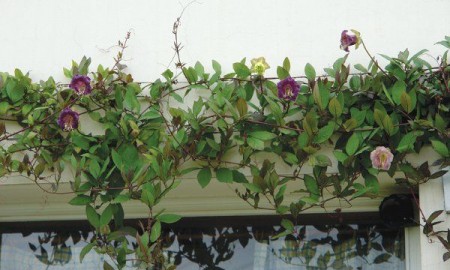
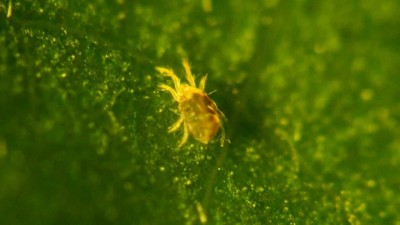

 (16 ratings, average: 4,44 out of 5)
(16 ratings, average: 4,44 out of 5) CUCUMBERS NEVER GET SICK, I'VE BEEN USING ONLY THIS FOR 40 YEARS! I SHARE A SECRET WITH YOU, CUCUMBERS ARE LIKE THE PICTURE!
CUCUMBERS NEVER GET SICK, I'VE BEEN USING ONLY THIS FOR 40 YEARS! I SHARE A SECRET WITH YOU, CUCUMBERS ARE LIKE THE PICTURE! You can dig a bucket of potatoes from each bush. Do you think these are fairy tales? Watch the video
You can dig a bucket of potatoes from each bush. Do you think these are fairy tales? Watch the video
 How our fellow gardeners work in Korea. There is a lot to learn and just fun to watch.
How our fellow gardeners work in Korea. There is a lot to learn and just fun to watch. Eye trainer. The author claims that with daily viewing, vision is restored. They don't charge money for views.
Eye trainer. The author claims that with daily viewing, vision is restored. They don't charge money for views. A 3-ingredient cake recipe in 30 minutes is better than Napoleon. Simple and very tasty.
A 3-ingredient cake recipe in 30 minutes is better than Napoleon. Simple and very tasty. Therapeutic exercises for cervical osteochondrosis. A complete set of exercises.
Therapeutic exercises for cervical osteochondrosis. A complete set of exercises. Which indoor plants match your zodiac sign?
Which indoor plants match your zodiac sign? What about them? Excursion to German dachas.
What about them? Excursion to German dachas.
The second year I sowed a beautiful kobeya; The first year it grew so powerfully that I risked bringing it into the room, but alas, I can’t do this, wine flies immediately fly in and then I have to fight them, the damp earth is a paradise for them.
This year I have already planted it in the garden, under the catelor, while the sprouts are small, just putting out tendrils.
The color is amazing, it starts from white-green, and then the coloring options thicken and become lilac.
Two of the 4 seeds sprouted.
Completely random coincidence